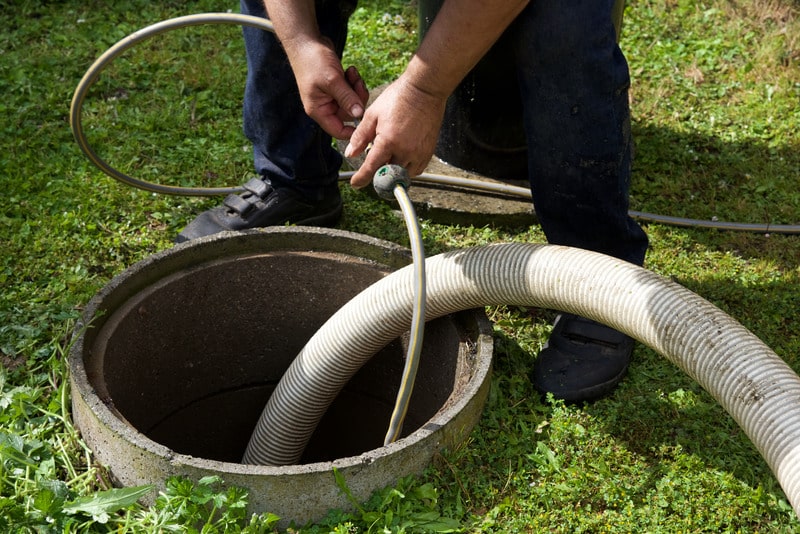6 Simple Techniques For Stillwell Septic And Grading
6 Simple Techniques For Stillwell Septic And Grading
Blog Article
3 Easy Facts About Stillwell Septic And Grading Described
Table of ContentsGetting The Stillwell Septic And Grading To WorkThe Greatest Guide To Stillwell Septic And GradingStillwell Septic And Grading Things To Know Before You BuyFascination About Stillwell Septic And GradingStillwell Septic And Grading for DummiesSome Known Facts About Stillwell Septic And Grading.
Repair leaking taps and plumbing fixtures. https://www.mixcloud.com/stillwellsag/. A leaky toilet can squander numerous gallons of water a day. Take shorter showers. Strive for much less than 5 and do the shower jive. Take bathrooms with a partially-filled bathtub and do not leave the faucet running when doing various other jobs. Laundry only complete tons of dishes and laundry.
Unknown Facts About Stillwell Septic And Grading
Prevent melting piles of leaves or branches over the drainfield, as the heat might harm the plastic pipes below. Limitation the enhancement of topsoil or garden compost to no greater than a couple of inches over the drainfield. Septic Tank Repairs. An excellent general rule for landscaping over drainfields is to use shallow-rooted plants that do not require added topsoil to prosper
Turfs, blended wildflowers, and ground covers with shallow roots are good alternatives. Plant trees and shrubs at least 30 feet away from your septic tank and drainfield to maintain origins from obtaining right into and breaking or blocking the drainfield pipelines.
A septic system failing triggers untreated sewer to be released and transferred to where it should not be. This might trigger sewer to come to the surface area of the ground around the tank or the drainfield or to back up in pipelines in the building.
Rumored Buzz on Stillwell Septic And Grading
In many cases, the person who falls in ventures out without major injury. But a child's terrible fatality is a suggestion to examine your septic tank for harmed or missing lids. Owners of septic tanks are in charge of making sure the systems are safe and function properly, including having a safe lid on the containers
Routinely examine the problem of the covers for threats or problems. Keep the lids safe and secure by fixing or replacing all damaged or missing parts. Use screws, screws, or other locks to secure the lids and avoid simple gain access to. Never ever drive or park lorries on top of septic tanks- it can harm or displace the cover.
Stillwell Septic And Grading - The Facts
Make sure the covers are protected after functioning on your septic system. Show youngsters that the septic container lids are not to be played on or opened.
Keeping in mind the degrees will help identify if there is a prospective concern with the system. Then, the storage tank will be completely pumped down, eliminating all of the fluid and solid waste. When the tank is totally pumped, the inlet and electrical outlet tees of the will be inspected to ensure they are still undamaged and working appropriately
Things about Stillwell Septic And Grading
If you are home at the time of service (absolutely not called for if that's not your point) you might be asked to purge your bathrooms to ensure whatever is moving properly. Once the service is total, the sewage-disposal tank will be covered as it was when we got here! Specialists recommend having your system pumped every 3 to 5 years but a number of variables should be thought about when deciding exactly how usually your septic system needs to be serviced.

If your septic has not been serviced in even more than 6 months, we would desire to service the septic. If the issue continues, a drain cleaner will certainly after that be sent out to remove the line to the septic tank.
The smart Trick of Stillwell Septic And Grading That Nobody is Talking About

If the ponding is focused over the leach field that might suggest a leach reference line is blocked with Bio-Mat and needs to be fixed or changed. Many sewage-disposal tanks have two to three covers; one over the inlet side of the sewage-disposal tank (where the water from your home goes into the tank), one in the center of the container, and one on the outlet side of the tank (where the liquid from the storage tank exits to your leach field).
Sliced up food particles do not break down in the septic container and can make their means out into your leach field lines causing blockages. Waste disposal unit, also those significant septic safe, are not considered helpful for your septic tank. Appropriate functioning degree is where the water level in your tank fulfills the electrical outlet tee of the tank.
Report this page